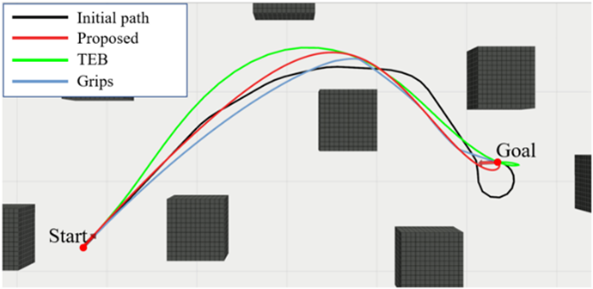Service robots are a current point of interest due to their specialized functional design. When performing operations, changes in the functional structure of service robots may hinder their autonomous navigation capabilities and limit their mobility. The research discussed in this paper aims to solve the trajectory planning problem of deformable robots in complex three-dimensional environments, focusing on the trajectory planning of mobile robots based on differential drive mobile bases, which is the most popular approach.
This method of global trajectory optimization adopts a polynomial model for the trajectory of the robot body, satisfying the kinematic requirements of the mobile base and the dynamics of any additional joints. Additionally, constraints are transformed into flexible constraints, and densely sampled activation functions are used to avoid non-linear discontinuities. Furthermore, it ensures system safety by limited the distance between the robot and obstacles. To simulate variations in height and width encountered in complex environments, the research team also designed a novel deformable robot with a differential drive mobile base (SCR-DB) to conduct real-world experiments.

Experiments with a deformable robot (SCR-DB) with a differential drive mobile base
To evaluate the effectiveness of this trajectory optimization method, the research team conducted extensive simulations and real-world experiments, such as the trajectory planning of coupled whole-body and independent differential drive robots. The researchers used the NOKOV motion capture system to provide accurate trajectory and kinematics data for the experiments.

Trajectory of simulation with different experimental settings
The experiments verified the effectiveness of this global trajectory optimization method, which provides smooth, collision-free trajectories for the deformable SCR-DB robot at a low computational cost. This algorithm is also applicable to other robots with a differential drive base.
Bibliography:
Mengke Zhang, Chao Xu, Fei Gao, Yanjun Cao. (2023). Trajectory Optimization for 3D Shape-Changing Robots with Differential Mobile Bas. In International Conference on Robotics and Automation (ICRA).